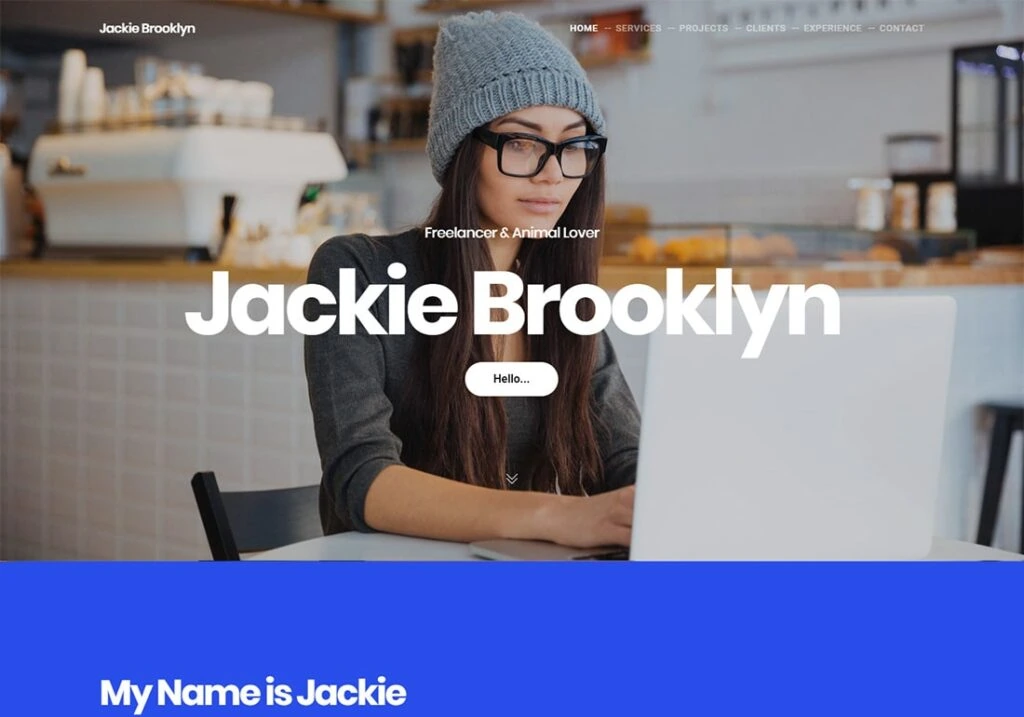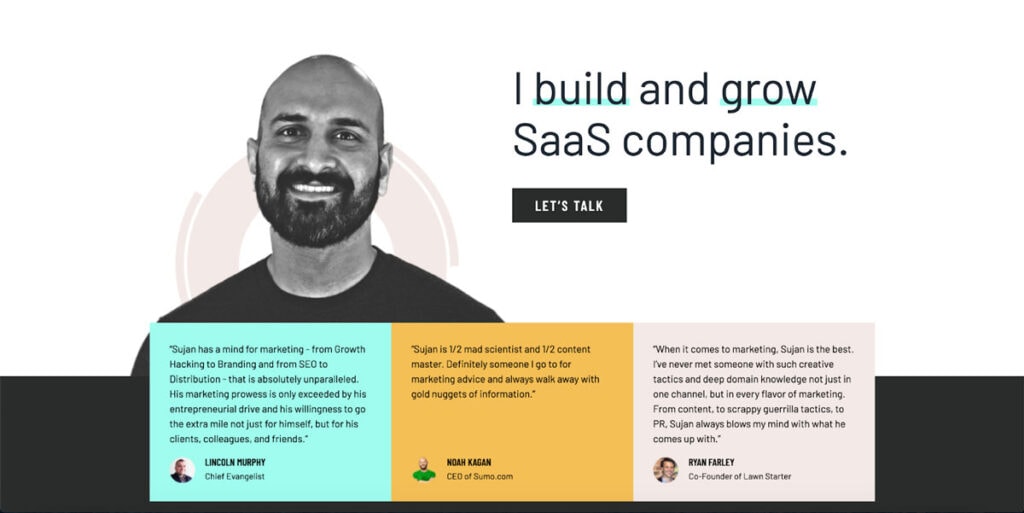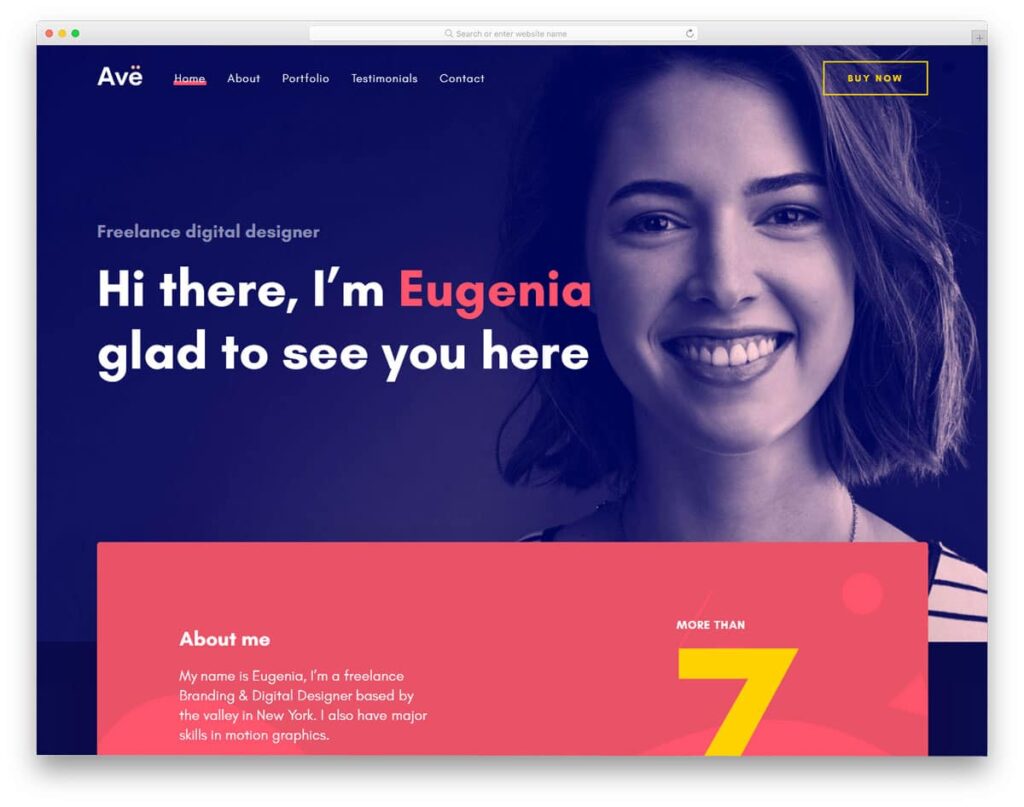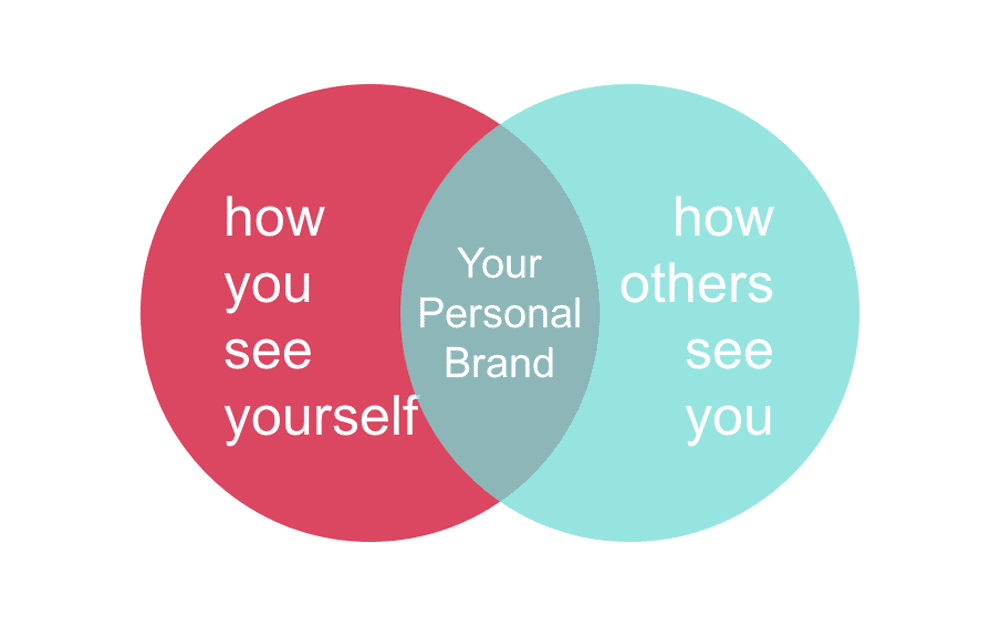Branding Yourself: How to Build Your Personal Brand from Scratch
In today's highly competitive job market, having a solid personal brand can make all the difference. Whether you're an entrepreneur, freelancer, or just starting your career, building a personal brand can help you stand out and achieve your professional goals. This article will explore personal branding, why it's essential, and branding yourself from scratch. So, let's get started!
Table of Contents
What is Personal Branding?

Personal branding is the strategic practice of developing and marketing a distinctive brand identity around an individual's persona. This involves crafting a narrative and reputation that encapsulates who you are, what you do, and the core principles you stand for. Your brand is the culmination of your values, abilities, experiences, and individual traits, which help distinguish you from others in the professional and social spheres.
In today's interconnected world, personal branding is not just limited to your offline presence but also extends to your online persona. Your digital footprint, including your social media presence, unique website, and any published content, all contribute to the overall perception of your brand. This multi-faceted approach ensures that you consistently present yourself in a way that aligns with your desired image and message.
There are several critical components to building a solid personal brand:
- Authenticity: A successful personal brand is built on the foundation of genuineness. It's essential to showcase your true self, as people can sense when someone is not authentic. Embrace your unique qualities and experiences, and communicate them honestly to create a compelling and relatable personal brand.
- Consistency: Consistency in messaging and presentation across all platforms is crucial for maintaining a solid personal brand. This includes the visual elements like colours, fonts, and images and your content's tone, style, and voice. Keeping a consistent brand makes it easier for others to recognise and remember you.
- Value proposition: Identify what sets you apart from others and the unique value you can offer. This could combine your expertise, skills, experiences, or personal traits. By clearly defining your value proposition, you can position yourself as an authority in your field and create a more compelling personal brand.
- Storytelling: Leverage the power of storytelling to convey your brand in a relatable and engaging manner. Share your journey, experiences, successes, and failures to create a narrative that resonates with your target audience. Storytelling humanises your brand and helps others understand your motivations and what drives you.
- Networking: Building a solid network is an integral part of personal branding. By connecting with others, sharing your expertise, and offering support, you can expand your reach, build credibility, and create lasting relationships that benefit your personal and professional life.
- Continuous improvement: Personal branding is an ongoing process that requires constant reflection, growth, and adaptation. Stay current with industry trends, acquire new skills, and evolve with the changing landscape to ensure your brand remains relevant and competitive.
Personal branding is the art of shaping your unique identity to stand out in an increasingly crowded world. By understanding and implementing the essential components of personal branding, you can create a solid and memorable presence that sets you apart from the competition and paves the way for personal and professional success.
- Amazon Kindle Edition
- Hennessy, Brittany (Author)
- English (Publication Language)
- 274 Pages – 07/31/2018 (Publication Date) – Citadel Press (Publisher)
Why is Branding Yourself Important?
In today's digital age, branding yourself has become more critical. With the rise of social media and online networking, your brand is often people's first impression of you. It's what potential clients, employers, and colleagues will see when they Google your name. And it can have a significant impact on your professional success.
A solid personal brand can help you:
- Stand out from the competition
- Build credibility and trust
- Establish yourself as an expert in your field
- Attract new clients, customers, and job opportunities
- Increase your visibility and influence
How to Build Your Personal Brand from Scratch
Building a personal brand from scratch can seem overwhelming, but it doesn't have to be. By following these steps, you can start building your brand today.
Step 1: Define Your Brand

The foundation of a successful personal brand lies in defining your essence and purpose. To initiate the process of building your brand, begin by introspectively exploring the following key questions:
- What are my core values?
- What are my greatest strengths?
- What ignites my passion?
- What are my short-term and long-term goals?
- What distinguishes me from others in my field?
Gaining clarity on these aspects of your identity and aspirations enables you to establish the basis of your brand message. This message should be a coherent and succinct expression of your essence, encapsulating who you are, what you do, and how you uniquely contribute to your field.
To create an impactful brand message, consider the following guidelines:
- Be clear and concise: Your brand message should be easily understood and free from ambiguity. Aim for a succinct statement that concisely captures your personal brand's essence.
- Highlight your unique value proposition: Identify the unique blend of skills, experiences, and perspectives that differentiate you from others in your field. Emphasise these aspects in your brand message to showcase your distinct value.
- Communicate your differentiators: Articulate what sets you apart from your peers or competitors, clarifying why someone should choose to work with or hire you over others with similar skills or backgrounds.
- Align with your values and passions: Ensure that your brand message reflects your core values and passions, as this will create an authentic and relatable image.
- Stay focused on your goals: Your brand message should align with your short-term and long-term goals, helping you stay on track and providing a roadmap for personal and professional development.
- Remain adaptable: As you evolve and grow, so should your brand message. Regularly revisit and refine your message to ensure it continues to represent your current goals, values, and unique offerings.
Crafting a compelling and authentic brand message is critical in developing your brand. By understanding your core attributes, values, and aspirations, you can construct a message that resonates with your target audience and sets you apart from others in your field. As you continue cultivating your brand, your brand message will serve as the cornerstone of your professional identity and guide your journey toward success.
Step 2: Create Your Brand Identity

After articulating your brand message, the next step in crafting a strong personal brand involves constructing your brand identity. This encompasses your brand's visual and verbal aspects, including your logo, colour scheme, website design, unique style, and tone of voice. A well-defined brand identity helps you create a memorable and consistent image that resonates with your target audience.
To effectively develop your brand identity, consider the following guidelines:
- Visual branding elements: Design a logo that represents your brand and resonates with your target audience. Choose a colour scheme that aligns with your brand's personality and values, and consistently use these colours across all marketing channels. Additionally, pay attention to typography, graphics, and other visual elements contributing to your brand's overall aesthetic.
- Website design: Your website is a central hub for showcasing your expertise, portfolio, and other relevant information. Ensure your website design aligns with your visual branding, is easy to navigate, and reflects your personal brand's essence. Remember to optimise your website for mobile devices to provide a seamless user experience.
- Personal style: Your unique style, including clothing, accessories, and grooming, contributes to your brand identity. Dress and present yourself in a way that reflects your brand values, target audience, and professional aspirations. Consider how your style can support and enhance your brand identity.
- The tone of voice: Establish a consistent manner for all written and spoken communication. This includes social media posts, blog articles, presentations, and face-to-face interactions. Your tone of voice should align with your brand's personality, values, and target audience.
- Consistency across marketing channels: Ensure your visual and verbal brand identity is cohesive across all online and offline platforms. Use the same colours, fonts, and tone of voice in your social media profiles, email signatures, business cards, and other marketing materials. Consistency strengthens your brand recognition and credibility, making it easier for your audience to remember and engage with your brand.
- Adapt and evolve: As you grow professionally and personally, your brand identity may need to adapt to reflect your changing goals and values. Periodically review and update your brand identity to ensure it remains relevant and accurately represents your current persona and aspirations.
By meticulously designing and maintaining a consistent brand identity, you can create a memorable and impactful presence that strengthens your brand. Integrating cohesive visual and verbal elements across all marketing channels will help you establish a unique, recognisable identity that sets you apart and fosters long-term success.
Step 3: Build Your Online Presence

In today's digitally-driven world, a robust online presence is indispensable for establishing and enhancing your brand. Harnessing the power of digital platforms enables you to showcase your skills, experience, and portfolio while connecting with others in your field. You can significantly amplify your personal brand's reach and impact by leveraging various online channels.
To build a solid online presence, consider the following strategies:
- Develop a professional website: A well-designed personal website is the cornerstone of your online presence. This digital hub should effectively showcase your skills, experience, portfolio, and other relevant information. Ensure that your website design aligns with your brand identity and offers a user-friendly experience for visitors.
- Utilise social media platforms: Harness the power of popular social media platforms like LinkedIn, Twitter, and Instagram to share your content, engage with your target audience, and network with peers and industry influencers. Each platform offers unique opportunities to showcase different aspects of your brand, so tailor your content and approach accordingly.
- Consistently publishing high-quality content: Regularly create and share content demonstrating your expertise, insights, and thought leadership. This could include blog articles, social media posts, videos, podcasts, or live events. High-quality content showcases your skills and knowledge, fosters engagement, and increases online visibility.
- Align your online presence with your brand message and identity: Ensure that every aspect of your online presence—from website design and social media profiles to the content you publish—consistently aligns with your brand message and identity. This cohesive approach reinforces your brand and helps establish trust and credibility with your target audience.
- Engage with your online community: Actively participate in online conversations, respond to comments, and engage with other users to build relationships and showcase your genuine interest in your field. You can create a positive image and expand your professional network by being an active and valuable contributor to your online community.
- Monitor and manage your digital reputation: Keep a close eye on your online reputation by regularly searching for your name on search engines and monitoring mentions on social media platforms. Address any harmful content or feedback promptly and professionally, and actively work to maintain a positive digital footprint.
- Update and optimise your online presence: Regularly review and update your website, social media profiles, and other online channels to ensure they continue to represent your brand accurately. Optimise your content with relevant keywords and best practices to improve your search engine rankings and increase your online visibility.
By cultivating a solid online presence, you can significantly enhance your brand and establish yourself as a respected authority. Consistently aligning your online activities with your brand message and identity will help you create a lasting, positive impression on your target audience and pave the way for personal and professional growth.
Step 4: Create Content that Resonates with Your Audience

Producing content that resonates with your audience is a powerful strategy for building your brand and branding yourself as an expert in your field. Begin by identifying the most relevant topics and pressing issues that matter to your target audience, and then craft content that addresses their needs and interests. Content formats can span various mediums, including blog articles, videos, podcasts, and social media updates. When creating content, it's crucial to remain authentic and share your unique insights and perspectives.
To effectively develop captivating content that bolsters your brand, consider the following tips:
- Conduct thorough research: Gain a deep understanding of your target audience's preferences, concerns, and challenges by conducting research, surveys, or interviews. This will help you identify the subjects that resonate most with your audience, allowing you to create engaging content.
- Diversify your content formats: Cater to different audience preferences and learning styles by exploring various content formats. Experiment with written articles, videos, podcasts, infographics, or live events to engage a wider audience and showcase your versatility.
- Share your unique perspective: Emphasise your distinct viewpoints, experiences, and expertise to make your content stand out. You can solidify your position as a thought leader in your industry by offering valuable insights and novel perspectives.
- Be authentic and relatable: Create genuine, transparent content that reflects your true self. Authenticity helps establish trust and rapport with your audience, fostering a strong connection and encouraging them to engage with your content.
- Maintain consistency: Publish high-quality content regularly to keep your audience engaged and informed. Establishing a consistent publishing schedule helps reinforce your commitment to your field and builds anticipation among your followers.
- Encourage interaction and feedback: Invite your audience to comment, ask questions, or share their thoughts on your content. This encourages active participation and helps you better understand your audience's needs, allowing you to refine your content strategy accordingly.
- Leverage your content for networking and collaboration: By consistently producing high-quality content, you can attract a loyal following and increase your influence within your industry. This can lead to new opportunities for collaboration, partnerships, and professional growth, further enhancing your brand and reputation.
By dedicating time and effort to creating engaging content that resonates with your audience, you can significantly strengthen your brand and establish yourself as an authority in your field. This expands your reach and influence and opens doors to new opportunities for collaboration and career advancement.
Step 5: Network and Collaborate with Others

Networking and collaboration are essential in building your brand and extending your reach. Connecting with like-minded individuals and organisations allows you to tap into new opportunities, acquire valuable insights, and elevate your professional profile. Embrace various avenues for networking and collaboration to make the most of your personal branding efforts.
To optimise your networking and collaboration strategy, consider the following approaches:
- Attend industry events: Participate in conferences, workshops, seminars, and other industry-related events to stay informed about the latest trends and developments in your field. These gatherings also offer excellent opportunities to meet and engage with potential collaborators, mentors, and industry influencers.
- Join professional organisations: Become a member of relevant professional associations, clubs, or online forums to expand your network and gain access to valuable resources, knowledge, and contacts. Active involvement in these organisations can enhance your credibility and showcase your commitment to your field.
- Connect on social media: Utilise social media platforms like LinkedIn, Twitter, and Instagram to follow and interact with peers, influencers, and thought leaders in your industry. Engaging in online discussions and sharing valuable content can help you build relationships and establish your expertise.
- Collaborate with influencers and brands: Seek opportunities to partner with other influential individuals or organisations in your industry. Collaborating on projects, events, or content can mutually benefit all parties involved, increasing exposure and credibility for everyone.
- Share your expertise and resources: Be generous with your knowledge and resources, offering assistance, advice, or support to others in your network. This helps to establish your reputation as a reliable, knowledgeable professional and can lead to new opportunities for collaboration.
- Engage in mentorship: Consider mentoring others in your field or seeking mentorship from an experienced professional. This reciprocal relationship can provide valuable learning experiences, foster personal growth, and strengthen your professional network.
- Participate in community events and initiatives: Engage in local community events, volunteer initiatives, or charitable causes that align with your values and passions. This can help you build relationships with like-minded individuals while contributing to the greater good.
You can significantly boost your brand and extend your professional reach by actively pursuing networking and collaboration opportunities. Cultivating relationships with influential individuals and organisations in your industry enhances your reputation and opens doors to new prospects for growth and success.
Step 6: Monitor Your Brand and Adjust Your Strategy as Needed

After establishing your brand, it's crucial to continually monitor your brand reputation and adjust your strategy to maintain relevance and address any challenges. Stay vigilant about online mentions and feedback, proactively addressing negative comments or criticism and ensuring that your brand message and identity remain consistent with your values and objectives. As your career progresses, your brand may require refinement to reflect your evolving goals and expertise.
To effectively monitor and adapt your brand, consider the following guidelines:
- Monitor online mentions and feedback: Regularly search for your name on search engines and track mentions on social media platforms to stay informed about how others perceive your brand. This lets you promptly address negative feedback and capitalise on positive comments or testimonials.
- Respond proactively to criticism: If you encounter negative feedback or criticism, address it professionally and constructively. Demonstrating your willingness to learn from feedback and improve your brand can enhance your credibility and showcase your commitment to growth.
- Regularly evaluate your brand message and identity: Periodically review your brand message and identity to ensure they continue to reflect your values, goals, and unique selling proposition. As your career evolves, your brand may need adjustments to remain relevant and accurately represent your current expertise and aspirations.
- Update your online presence: Keep your website, social media profiles, and other online channels up-to-date to accurately showcase your skills, accomplishments, and current professional focus. Regular updates and optimisations can improve your online visibility and search engine rankings.
- Assess your content strategy: Review your content strategy to ensure it continues to resonate with your target audience and aligns with your brand message and identity. Adapt your content approach to address changing audience needs, industry trends, or personal growth.
- Evaluate your networking and collaboration efforts: Reflect on the effectiveness of your networking and collaboration initiatives in expanding your reach and boosting your brand. Identify improvement areas and seek new opportunities to engage with your industry and community.
- Stay informed about industry trends and developments: Maintain a strong understanding of your field's latest trends and developments to ensure your brand remains current and knowledgeable. This enables you to adapt your brand strategy to address changing market conditions or audience preferences.
By continuously monitoring and adapting your brand, you can maintain its relevance, respond effectively to feedback, and capitalise on new opportunities as your career evolves. Regularly assessing and refining your brand message, identity, and strategy can help you stay ahead of the curve and solidify your position as a respected authority in your industry.
Conclusion
Building a personal brand can be a powerful tool for achieving your professional goals and standing out in a crowded market. By defining your brand message, creating a solid brand identity, building your online presence, creating content that resonates with your audience, networking and collaborating with others, and monitoring your brand reputation, you can make a personal brand that sets you apart and helps you achieve success.
Branding yourself takes time and effort, but the payoff can be significant. Investing in your personal brand today can position you for success in future years.
Last update on 2024-05-03 / Affiliate links / Images from Amazon Product Advertising API

